
#004 aei Metal worker
2022.11.21

2022.11.21
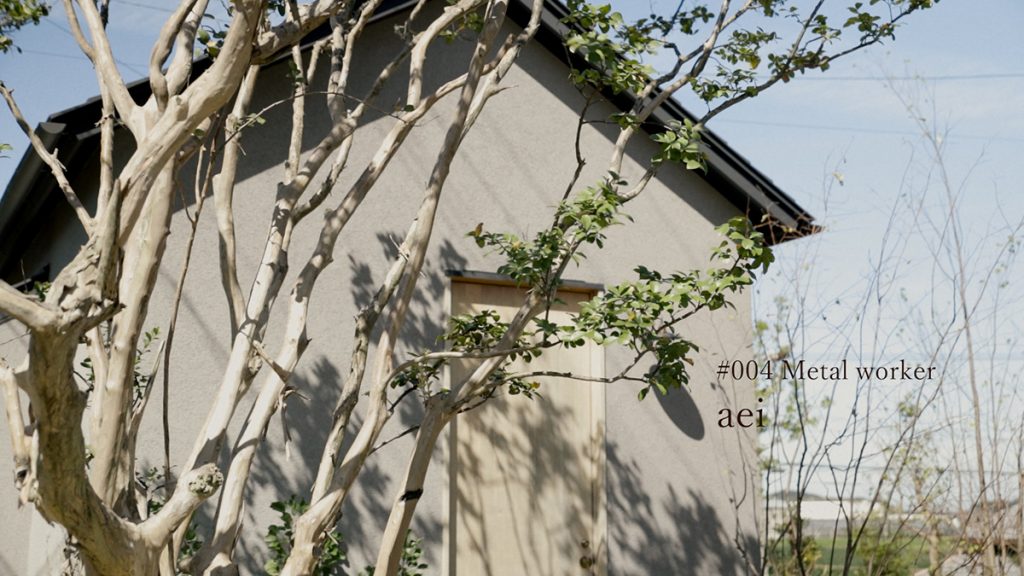
The atelier, with its cute triangular roof, was located on a hill a short distance from the sea.
As soon as you step into the entrance, you can see the high sky and trees beyond the inner window of the room.
On a clear and windy autumn day, we visited the studio of goldsmith Akemi Kuwayama, aei.
Inside a glass case in the gallery, lit by natural light, were intricately designed brass and silver ornaments. In the back of the case is the space where she creates her works.
Through the wide, slightly elevated windows, one can see the autumn sky and trees, and the inside of the studio still smells of fresh wood.
It is a very comfortable space, surrounded by the sound of the wind and standing in the soft sunlight filtering through the trees.
Kuwayama laughs, “I can’t concentrate if I can see man-made objects outside, so I made the windows so that I can see the view when I sit here.
The production space is furnished with a thread saw, engraving, needle-thin metal rods, glass jars filled with seashells and dried flowers, new copper plates, and beakers, giving the space the feel of a woodworking room, science lab, or art room.
This time, I had the opportunity to observe the finishing process of a hairpin and the creation of a bangle, a piece that is very dear to his heart.
A high-pitched metallic sound echoed in a steady rhythm.
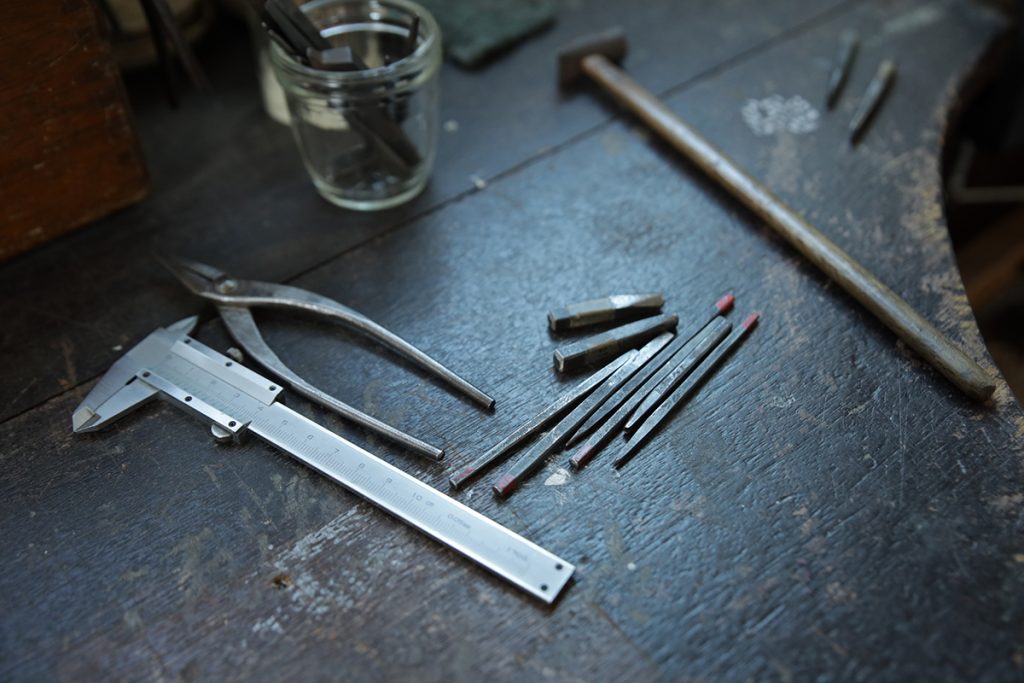
The engraving is done by hand, one by one, in accordance with the millimeter-by-millimeter detailed design drawings.
A small metal plate, which could easily fit in the palm of one’s hand, is engraved with detailed patterns, changing angles little by little.
It is a time that requires concentration and patience, as if one is afraid to even take a breath.
The sound echoing in the brightly lit room sounds somewhat like a brass instrument.
Once each part is completed, the pieces are carefully filed and chamfered.
Ms. Kuwayama says that he is particular about the texture of the burrs, as the ornaments are to be worn for a long time.
Once the shape is completed, it is brazed and dipped in chemicals to bring out the texture.
When finishing, he could have polished them to a shiny finish, but he dares to leave the texture.
A shiny finish can be done by machine,” he says. But I make my products with the idea of leaving traces of my hand and taking into account that the appearance changes over time,” he says.
Indeed, looking at the earrings, rings, and bangles made of brass, silver, and gold, one can feel the traces of human hands and breath in each piece.
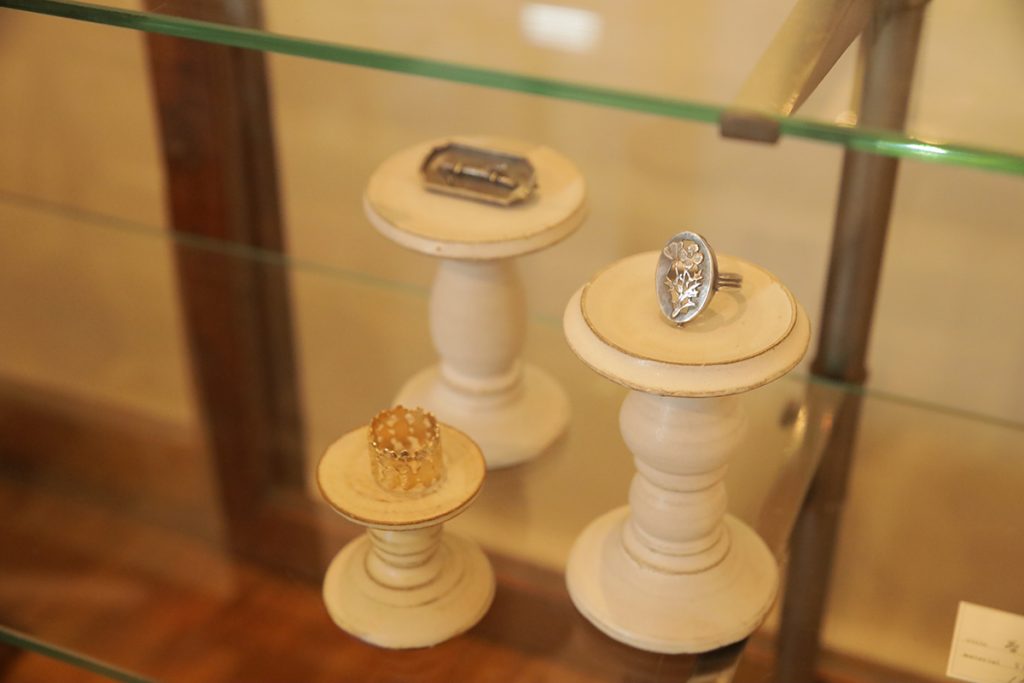
Another impressive feature is the names given to the works, which reflect familiar landscapes.
The names of the works, such as “Scent Carried by the Wind,” “Guidelines for Travel,” and “The Bird Who Wanted to Be the Moon,” are full of poetic worldviews.
When you gaze at the works, you feel as if you are listening to poetry or music being played.
When I asked him, “Are these beautiful titles inspired by the greenery and the sea around you? I asked. Surprisingly, he replied, “I have a lot of input, but it often comes to me in a moment or when I am doing housework.
In these carefully crafted small works, the scenery reflected through Kuwayama’s eyes and lyrical stories spread endlessly.
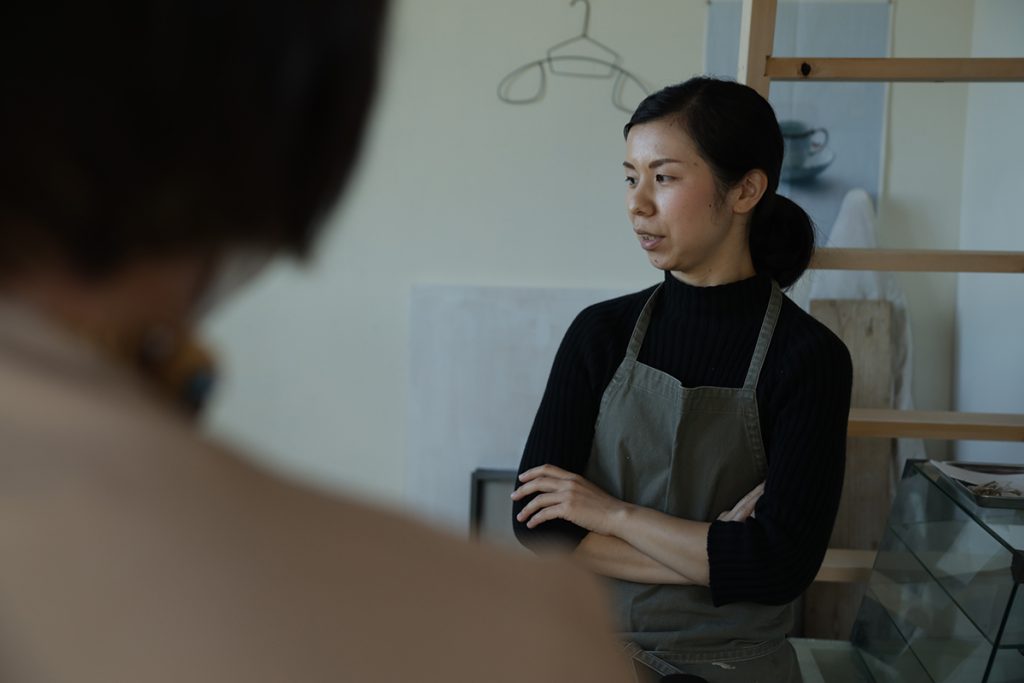
My name is Akemi Kuwayama.
I was born and raised in a town called Tokoname City in Aichi Prefecture.
Tokoname City is a pottery production area and is surrounded by crafts and manufacturing, so I think now that I was influenced and fell in love with craftsmanship without realizing it.
I entered an art college and studied metalworking, and upon graduation, I started my own business under the name “aei.
The name “aei” is an old Greek word meaning “eternity.
My first name is “akemi,” which has the same vowel sound as “aei,” and I felt it was fate that led me to the name “aei.
I make works that seem to capture landscapes.
This bangle is also a work that seems to capture the scenery of a forest, and is titled “Forest Choir,” with birds making noise in the forest.

After creating the shape through a thread saw, another engraving is hammered to create the pattern, and finally the bangle is formed.
This bangle is a very emotional piece. When I made the first one, I was in the last month of pregnancy and it was in the middle of summer.
The previous studio did not have air conditioning, and I was working in the pouring sweat on a very hot day (37 degrees Celsius).
I was very satisfied with that environment, so I said to myself, “Okay, I’m going to give birth! I was so satisfied with that environment that I said to myself, “All right, I’m going to have a baby!
I presented this work at my first solo exhibition when I was three months pregnant with my child.
The hairpin I made today was created at the request of a customer.
There are three types of designs, this one is olive, and there are also mimosa and clover.
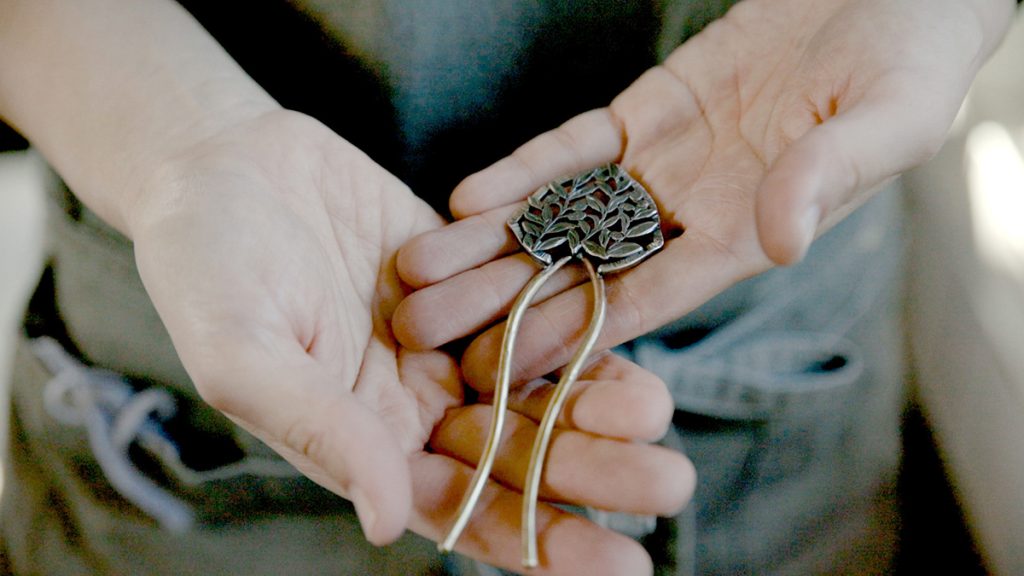
I have always loved to make flower crowns, so I titled this piece “Braided Flower Crowns.
But I couldn’t make it into a circle all the way through. It’s always in the process of being knitted (laughs).
I made this piece while remembering that.
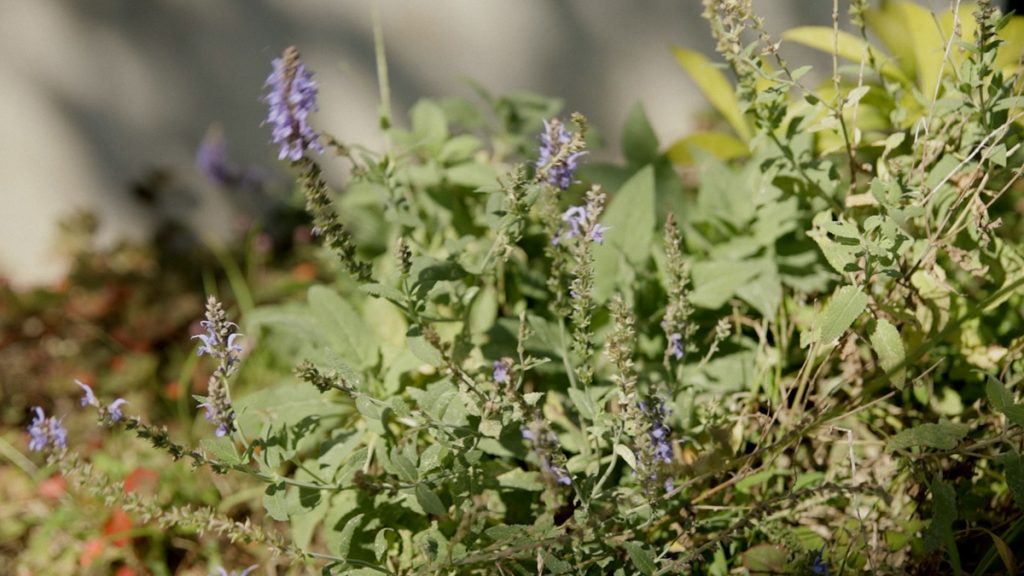
It is the same as when a painter paints a landscape or a photographer takes a picture.
I just make small sculptures of the scenery I see with my eyes. There is nothing special about them, but I make them out of my desire to own wonderful scenery and things.
My goal is to keep going.
I don’t have a big goal that I want to do this or that, but I like the fact that there is no retirement in this profession.
I think I will probably keep on making things as long as my hands work, even when I become a grandmother.
I think it’s okay to go at your own pace.
I only make things because I feel uneasy if I don’t. If I don’t want to make things, I can take a break or do something different.
Maybe those who want to make it will want to make it again. I really think it’s good to be free.
I think that if you don’t have money, your heart will become poor.
(I think it’s good to have enough money to make a minimum living (production costs, living expenses, etc.) and to do the things you like to do.
Everyone’s life is different, so I think there is a balance to be found.
It is very important to rely on the people around you, and I have made it a point to say so.
I introduce myself so that I can get work in various places, saying things like, “I’m working as a writer. Sometimes it is embarrassing (laughs).
(laughs). You need to have the spirit of not waiting for work, but going out to get it.
On October 29 (Sat.) and 30 (Sun.), I will be at an event called “Wind from the Studio” in Ichikawa City, Chiba Prefecture. I will do my best.

Mr. Kuwayama describes himself as “always on the move, like a migratory fish.
I felt that her brightness, flexibility, and powerful vitality are the source of her continuing activities as an artist.
She also has a goal to travel around Japan in the future through her works.
Next year, he plans to hold workshops for adults and children at his solo exhibition.
If you have a chance, please take a look at the actual works in his hands.